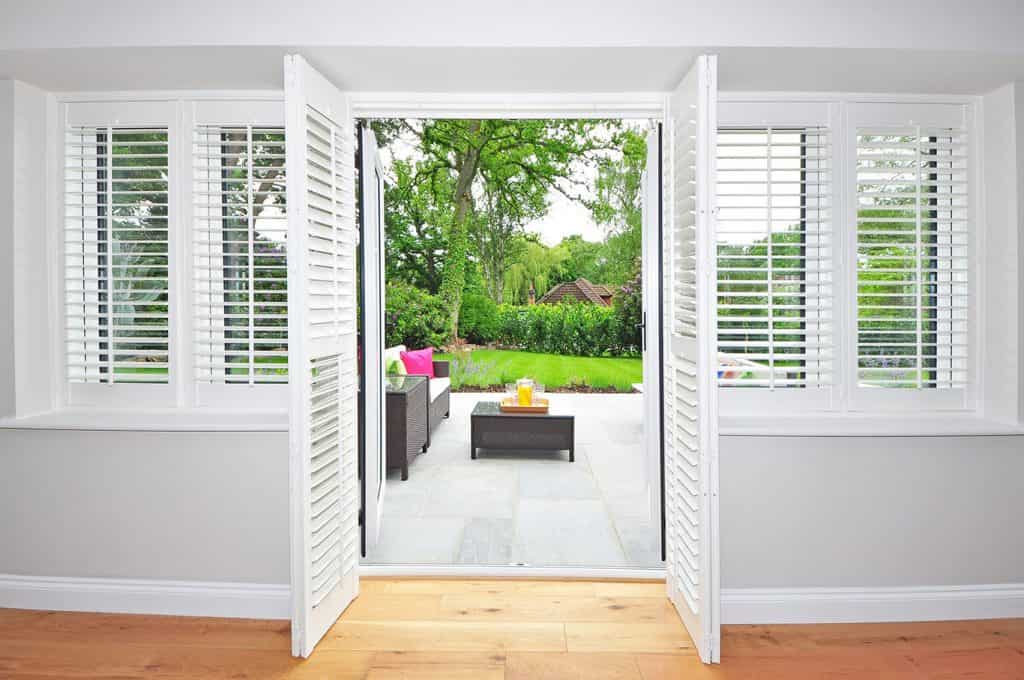Travel anywhere in mainland Western Europe and one thing you will immediately notice is the prevalence of functional exterior shutters on most of the homes. The word ‘functional’ is key here! Shutters are pretty common on US homes, but often, particularly in the north, they are merely decorative, and in some cases, are much smaller than the windows they are decorating, which creates an unusual and not entirely pleasant effect!
That isn’t the case in many parts of the south, of course, and anyone who’s lived in coastal Florida will have been thankful for their exterior rolling shutters, which often double as a form of hurricane proofing. Still, for most US visitors to Europe, the sight of rows of homes with functional shutters will be a pleasing novelty. However, those painted wooden window shutters are not just there to serve an aesthetic function. Europeans stick to exterior shutters because they have many advantages.


Different areas of Europe tend to have their own styles of exterior shutters. For example, although French shutters are not always made from wood, and can sometimes be metallic, they usually have a traditional look. They are hung on either side of the window, though on bigger buildings, they sometimes fold into the window frame. They also often conform to a local style, with all the houses on a particular street having the same colored shutters to match the house colors.
In Germany, rolling shutters are more common. These are fitted with all new properties, and unlike the French approach to shutters, are designed to be unobtrusive, rolling up out of sight when not in use. They are often colored plainly in white or grey, though they are rarely made out of metal. In Spain, the habit is for most shutters to be closed for much of the day, not just in order to protect people from the fierce sunlight, but also out of a desire for privacy.
While aesthetic considerations can play a part in the decision to fit exterior blinds, their main purpose remains the control of sunlight and how it affects the home. Unlike a plain window with curtains or interior blinds, exterior shutters can both reflect and absorb solar energy externally, before it reaches the window, ensuring that as little as 5% gets into the home. In winter, shutters can help to trap heat in the home more effectively, thus performing a double function.
Shutters are not only a good way to help keep out the sun and tackle the cold, they can also offer physical protection against the more severe elements, most notably gales, storms and hurricanes, which can cause debris to be flung against your windows. With a robust set of exterior shutters fitted, there is no need to hammer plywood over your windows in the event of a severe storm
Windows are not just there to protect you against the elements, of course, they are also the frame through which you see the world, and through which the world can see you! External shutters offer a good way to provide instant privacy where required, while still allowing light to enter your home. They can also help to boost your home’s security levels. A sturdy pair of exterior shutters can effectively act as a second form of lock on your windows to keep you extra safe.
Another advantage of shutters is that they are easy to replace and customize. As long as homeowners choose shutters that are big enough to cover their windows, there are plenty of options in terms of style and material to suit the design of a home.
Although exterior shutters may look like a traditional, even old-fashioned addition to a home, modern technology has made possible an array of user-friendly additions to the shutter, including fully motorized sliding and folding, to make it easy to open and close shutters from inside the home. Programmable external shutters are also available that can be set to open at certain times of day or night or to open and close in response to temperature or climate conditions.
While we might not be used to seeing external shutters in the US, across mainland Europe, they are a popular and attractive solution, providing protection from the sun, privacy and an aesthetic upgrade, as well as offering an environmentally-friendly method of temperature regulation in the home.
This website uses cookies.